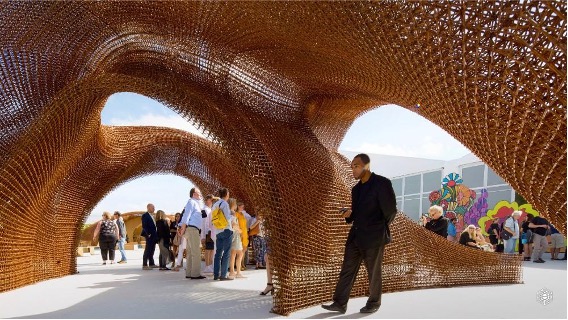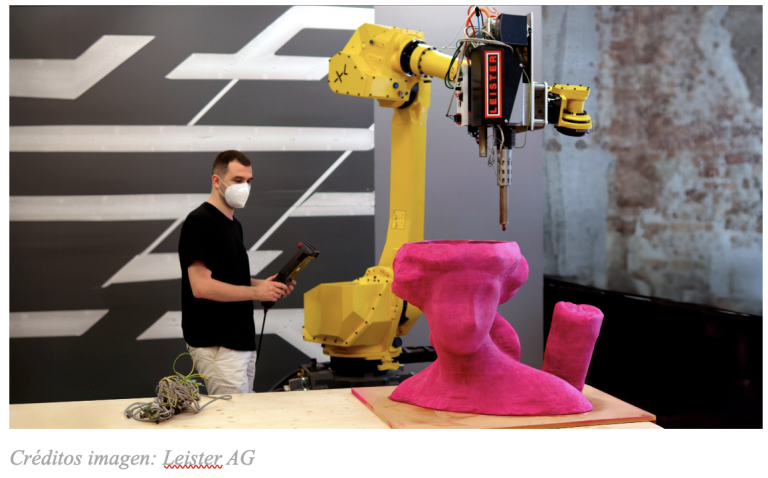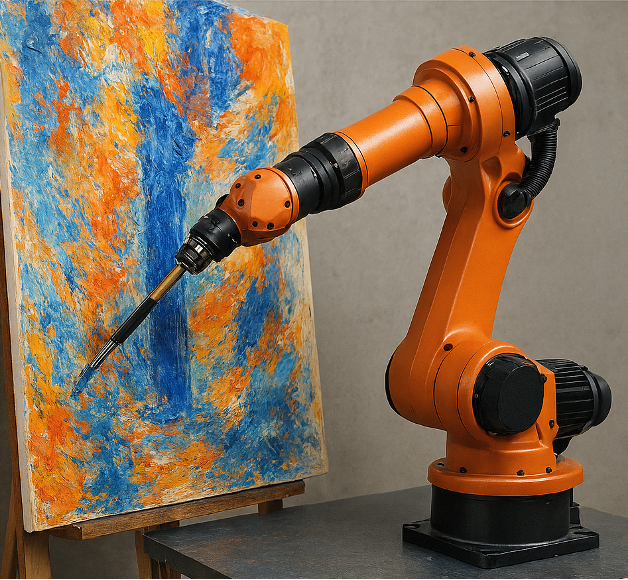The intersection of industrial robotics and additive manufacturing has opened up a new creative frontier. Robotic arms functioning as 3D printers now make it possible to produce freeform shapes, large-scale structures, and sculptures with geometries that traditional methods simply can't achieve. This fusion is no longer just a technical curiosity—it’s the foundation of real artistic and architectural projects that showcase how the precision and kinematic freedom of industrial robots expand the boundaries of 3D printing.
Thanks to their six-axis movement, these robots offer unmatched freedom in both form and scale. Unlike conventional FDM printers, which operate on a fixed X/Y/Z axis, six-axis robots can orient the deposition nozzle at any angle, allowing them to “print in the air” around existing structures. This flexibility enables the creation of complex volumes, overhangs, and curved surfaces that would be difficult—or impossible—with Cartesian systems. Companies like MX3D have harnessed this capability for metal fabrication using wire arc deposition, producing large architectural components with robotic arms equipped with wire-feed heads.
Real-world projects are already blending art, design, and engineering. In Amsterdam, MX3D’s printed steel bridge—one of the most publicized examples—proved that robotic arms can be used for metal deposition at an urban scale. Their Wire Arc Additive Manufacturing (WAAM) solutions enabled the creation of functional, structurally sound geometries. Experimental pavilions and sculptures have also emerged, using KUKA and other industrial robots paired with extruders to print modules and panels from recycled or composite filaments. One early documented case involved a pavilion printed with a head mounted on a KUKA Agilus, producing shading modules and structural membranes. Branch Technology has taken this further with its C-Fab process, combining robotics, algorithms, and freeform extrusion to create architectural cells and panels with optimized internal profiles. Their work on facades and large-scale elements shows how robotic additive manufacturing can be integrated into real construction projects. Artistic and experimental initiatives from Ai Build, WASP, and Aectual have pushed boundaries even further, using advanced robotic control and computer vision to accelerate and refine large-scale printing. These projects also explore recycled materials and composites, driving both aesthetic innovation and sustainability.
What does robotics bring to artistic and design practice? It offers dynamic precision—synchronized, repeatable movements essential for printing complex layers over non-flat geometries. It enables scale and modularity, allowing the fabrication of large components that can be assembled on-site, a key advantage in experimental architecture. And it opens the door to material experimentation, from recycled plastics to metal deposits (WAAM) and reinforced composites, facilitating novel deposition processes.
Of course, robotic printing comes with its own challenges: thermal control in metal deposition, structural certification for functional parts, surface finishing, and the need for software that can translate complex models into safe, optimized robotic paths. In artistic contexts, there's also a creative tension between intention and the limitations of materials and processes—but that very tension often sparks innovation.
Robotic arms are transforming 3D printing from a niche technology into a mature practice within art and architecture. Projects like MX3D’s bridge, experimental pavilions, and the work of companies like Branch Technology and WASP demonstrate how the convergence of robotics, software, and new materials enables the creation of large-scale, formally complex works. For artists, architects, and makers, this synergy is already a powerful platform for experimentation—and it’s poised to grow as processes, certifications, and the integration between design and robotic control continue to evolve.



